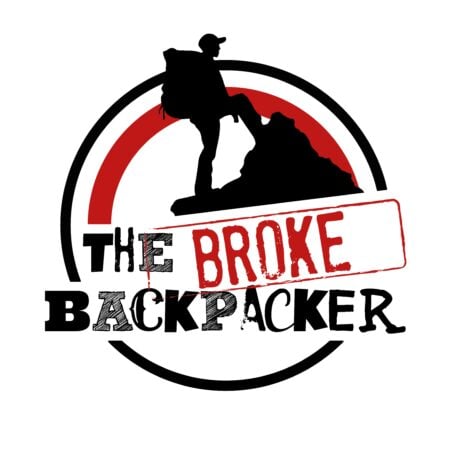The Broke Backpacker is supported by you. Clicking through our links may earn us a small affiliate commission, and that's what allows us to keep producing free content 🙂 Learn more.
The world has a plastic problem. We’ve all seen terrifying images of the Great Pacific garbage patch and overflowing landfills, and if you haven’t, well, one Google search will show you the full horror of what is going on. I’m going to start this post by suggesting that if you haven’t already, please go and watch ‘A Plastic Ocean’ on Netflix… It will clearly show you what is happening and just why it is SO important that we all do our part to try and avert catastrophe.
Here’s the thing guys – the generation before us has fucked up. Big time. Most plastic items take 1000 years to break down… This means that every single piece of plastic ever produced is still in existence, much of it in the world’s oceans, rivers and lakes.
The next ten years are absolutely crucial. If we are to avoid the worst possible effects of climate change and mountains of plastic trash, the time to act is right now. There really is no time left. To ignore this issue now is one of the biggest mistakes we can make. We are the last generation who will have the opportunity to avert catastrophe.
As backpackers, broke or otherwise, we are in a privileged position. It is our duty to do what we can to actively combat plastic waste and where possible to educate everybody we come across on the massive disadvantages of single use plastics.
Simply by refusing plastic straws, plastic cutlery, plastic bags you can make a difference. Not only are you reducing the amount of plastic that ends up in the environment but more importantly you can change the policy of restaurants, airlines, even local governments. A good example of this is Bali – there has been SERIOUS backlash against single use plastics as this once magical island continues to choke on plastic trash. In April, the government finally banned single use plastics across the island. Change can be made, you don’t need to become an eco-warrior to make a difference, this isn’t about preaching, it’s about action and sharing knowledge so that others understand the threat we are currently dealing with.
The world is fucking amazing… It’s our job as humans to protect it.
In this post, we’re going to talk about how to embrace sustainable travel and reduce your plastic footprint whilst on the road. Traveling the world often allows us a first-hand glimpse of just how catastrophic the world’s piling plastic problem is.
From the rubbish-filled beaches of India to the mountains of plastic on the streets of the Bangkok night market… the plastic problem is real, and it is destroying the earth.
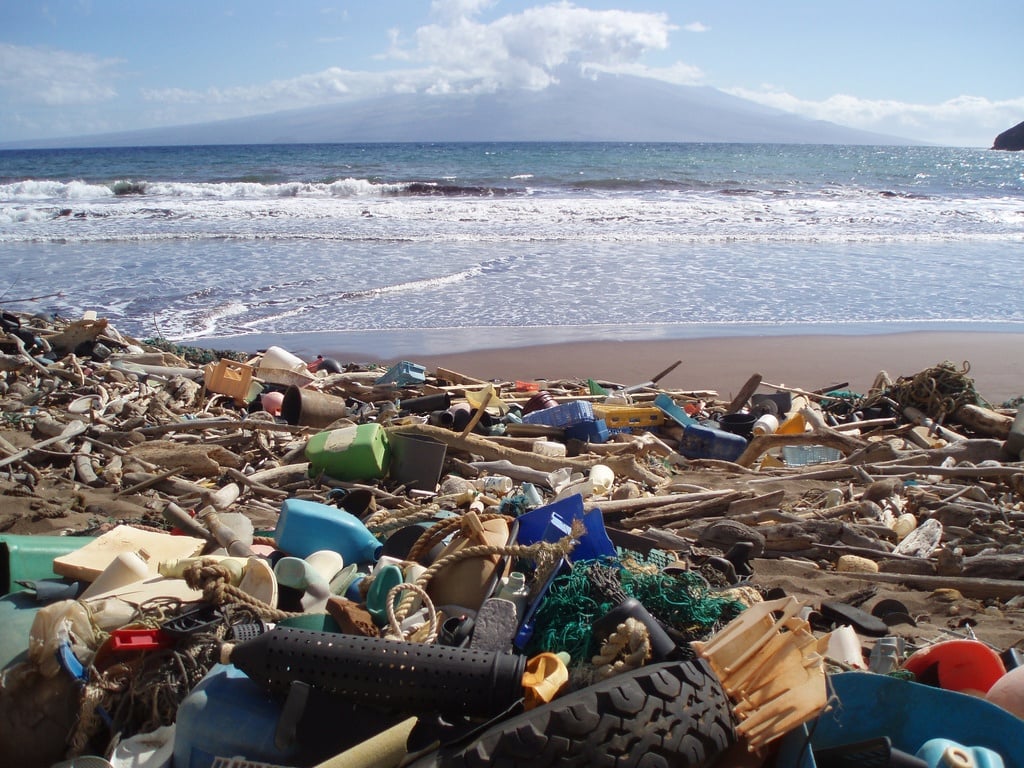
The Broke Backpacker is supported by you. Clicking through our links may earn us a small affiliate commission, and that's what allows us to keep producing free content 🙂 Learn more.
With more and more backpackers hitting the road each year, the impacts of non-sustainable travel are felt across the globe.
Single-use plastic culture is a major contributing factor to a travelers heavy footprint. Remember, every plastic bottle and bag you use will sit in a landfill and float through our oceans until it is broken down into micro-plastic pieces which inevitably end up getting into the food chain where they damage marine and human life alike. Did you know that you probably ingested a credit card sized amount of micro plastics this week? Not good my friends, and it’ll only get worse unless we take serious action.
On any given travel day, you are confronted with choices. Many of us don’t think twice about using a plastic fork or buying a bottle of water when we need to. Sometimes, the only practical option is to buy that 1-liter bottle of water.
We all need to drink and I get that, but as we barrel towards the peak of the plastic age, it is more important than ever to pivot towards sustainable travel and actively strive to reduce our plastic footprint.
The Plastic Problem
As said in The Broke Backpacker Manifesto, always SAY ‘NO’ TO SINGLE-USE PLASTIC. There are two major problems with single-use plastics. One of them is the method of production. Plastics are oil-based materials, usually derived from crude oil. Basically, it comes from the same stuff as the petrol you fuel your motorbike with. While this is a problem because of the polluting and unsustainable methods of oil extraction and refining, it doesn’t compare to the second issue…
Why don’t we have an aluminium problem or a glass problem? These materials degrade over time. Glass is basically inert. Have you seen what happens when glass bottles are left in the ocean for some time? It becomes sea glass, this beautiful gem-like stone with no environmental impact whatsoever. Aluminium cans that get washed out into the ocean last for about a century while the water and the air slowly oxidize the aluminium atoms one by one.
Plastics are meant to last a century, but the average Westerner uses and disposes of a dozen pieces per day. In the oceans, plastics can float or sink under different conditions, and they interact with the environment much more than glass or aluminium.
Rather than decomposing into its constituent parts (that’s oil, remember), plastics instead break down into smaller and smaller plastics. This plastic mush never ceases to exist and never becomes anything other than plastic.
Even with companies such as GOT BAG recycling ocean plastics into backpacks, the plastic soup mess is still rather unavoidable. We’re not going to get into it all here but basically those plastics carry toxins from the way they’re manufactured. The plastic soup is getting into our food chain and bringing all those toxins along with it.
So there’s definitely a problem. Now, what do we do about it?
Is recycling the solution?
No. Recycling has major problems and more than 85% of materials that are marked as ‘recycled’ instead find their way into landfills. This is because first world countries pay third world countries to dispose of their ‘recyclable materials’ – those third world countries are unable to do this properly so they simply dump the trash into the ocean.
Recycling IS a great concept and we should definitely be recycling everything we can, but the systems currently in place aren’t keeping plastic out of our environment.
Remember the age-old slogan is “Reduce, Reuse, Recycle.” There are a whole TWO options before recycling. The first is my favourite – don’t even use single-use plastics whenever you can help it.

How Sustainable Travel Helps
Much of the plastic pollution floating in our ocean and clogging our rivers originates in developing countries. Those countries don’t usually have reliable systems for disposing of plastics or waste in general. As a traveler, you probably won’t know the ins-and-outs of waste-disposal in the country, so the best thing you can do is reduce your use of harmful plastics.
Seriously, even though you threw that bottle into the recycling or the trash, there’s no assurance that it will end up recycled or incinerated. In a lot of places, trash is piled on the curb where dogs have a whole night to dig through it before someone hauls away what’s left in the morning.
Responsible travellers have more of an impact than the dozen or so bottles they decline to use during their trip. Every person who consciously purchases items with sustainable packaging has an effect on the economies they purchase from. Buying eco-friendly luggage, backpacks travel products (or just buying less of the disposable stuff) and using sustainable travel companies is a vote for greener and more responsible travel infrastructure.
Until our inept politicians are swept from power allowing the young and competent to sort this shitshow out, it is unlikely that plastics will be banned outright. Therefore, it is up to us to make responsible choices…especially when traveling to parts of the world ill-equipped with the resources to manage plastic waste.
Reducing your plastic footprint doesn’t take much effort, and in time, a little effort becomes routine… and healthy, sustainable travel routines are a beautiful thing, my friends.
Now, let’s take a look at the best ways we backpackers can reduce the amount of plastic we consume on the road.

Do You Want to Travel FOREVER??
Pop your email in below to get a FREE copy of ‘How to Travel the World on $10 a Day!’.
Top Tips for Reducing Plastic Consumption While Traveling
Paso a paso: what little steps do we make to head in the right direction? Let’s start with some good options.
1. Travel With a Refillable Water Bottle
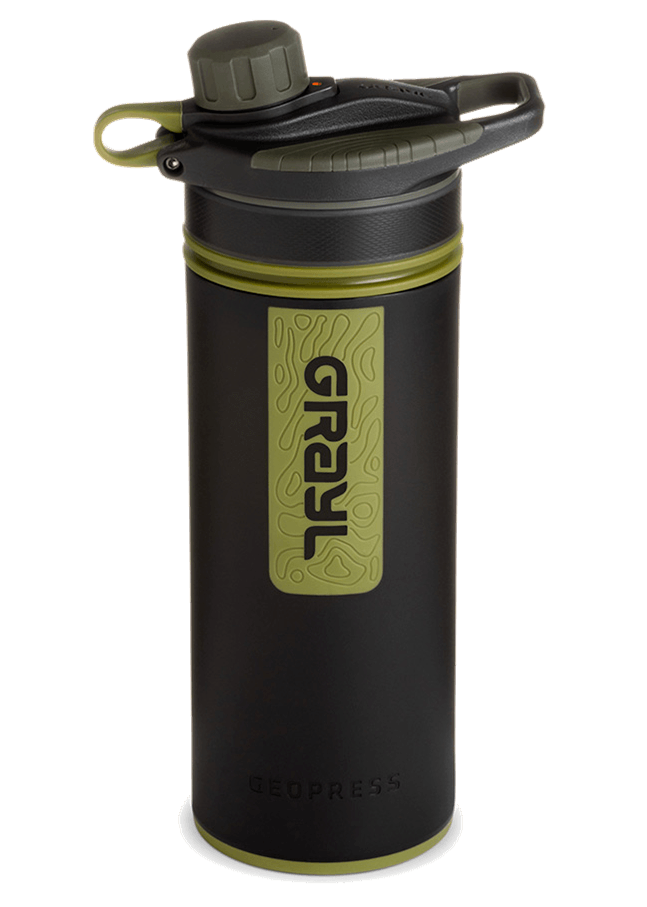
This is a big yet simple win. Carrying your own water bottle is a great way to reduce (or eliminate) day-to-day plastic water bottle purchases. In addition to upping your sustainable travel points, you save a ton of money over the course of a long-term backpacking adventure.
Have you seen those 5 oz plastic water bottles that only give you a few sips of water at best? They make me want to scream. They are truly pointless, a waste of money, and thrown away within seconds of opening them.
If you are a hiker/runner/or trekker, you know how important it is to always pack a water bottle. Do the planet a favor and pick up a tough travel water bottle. Refillable water bottles are not only sustainable travel tools, but they are also perfect for everyday use when you are at home as well.
2. Bring a Reusable Shopping Bag
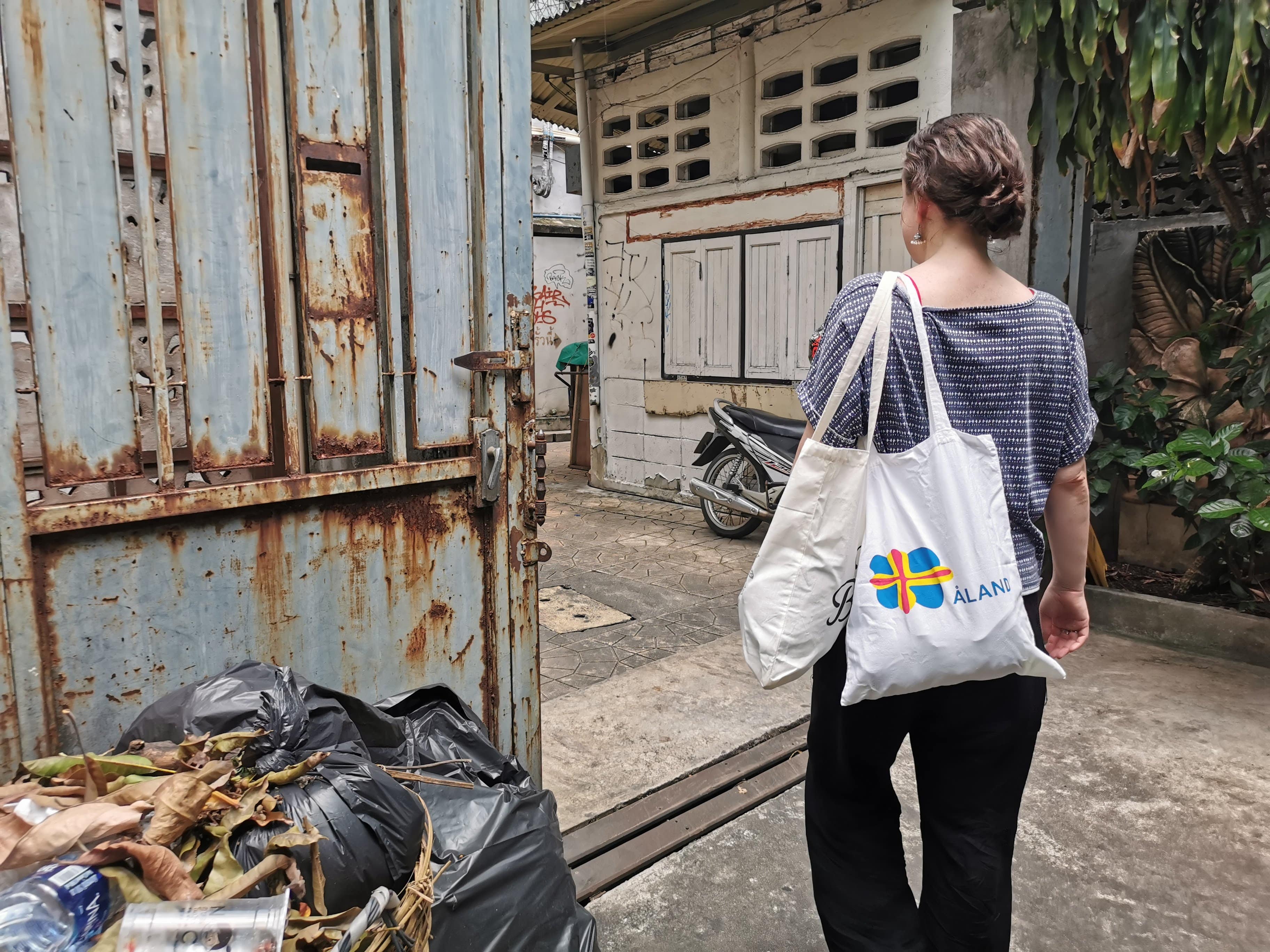
OK guys, this is probably the second biggest win in this list… Always have a fabric bag on you. That way you wont get caught out at the shops, market or whatever and be forced to take a plastic bag. I always have a couple of tough mesh bags stored in my scooter for this situation.
Unfortunately, the person selling you the fresh fruit at that market will inevitably put the goods in a plastic bag. Buzzkill. To combat this chronic plastic bag usage at markets, simply bring an empty bag with you (such as a day backpack).
The market is flush with reusable shopping bags that fold into themselves – perfect for having on you at all times for unexpected shopping and grocery trips! If you don’t know the language, having a bag out and ready is a clear sign you don’t need a plastic bag.
Keep in mind that the purchase of a reusable shopping bag isn’t enough. You really need to put that bag to work for it to be a sustainable purchase.
3. Pack a Water Purifier Bottle
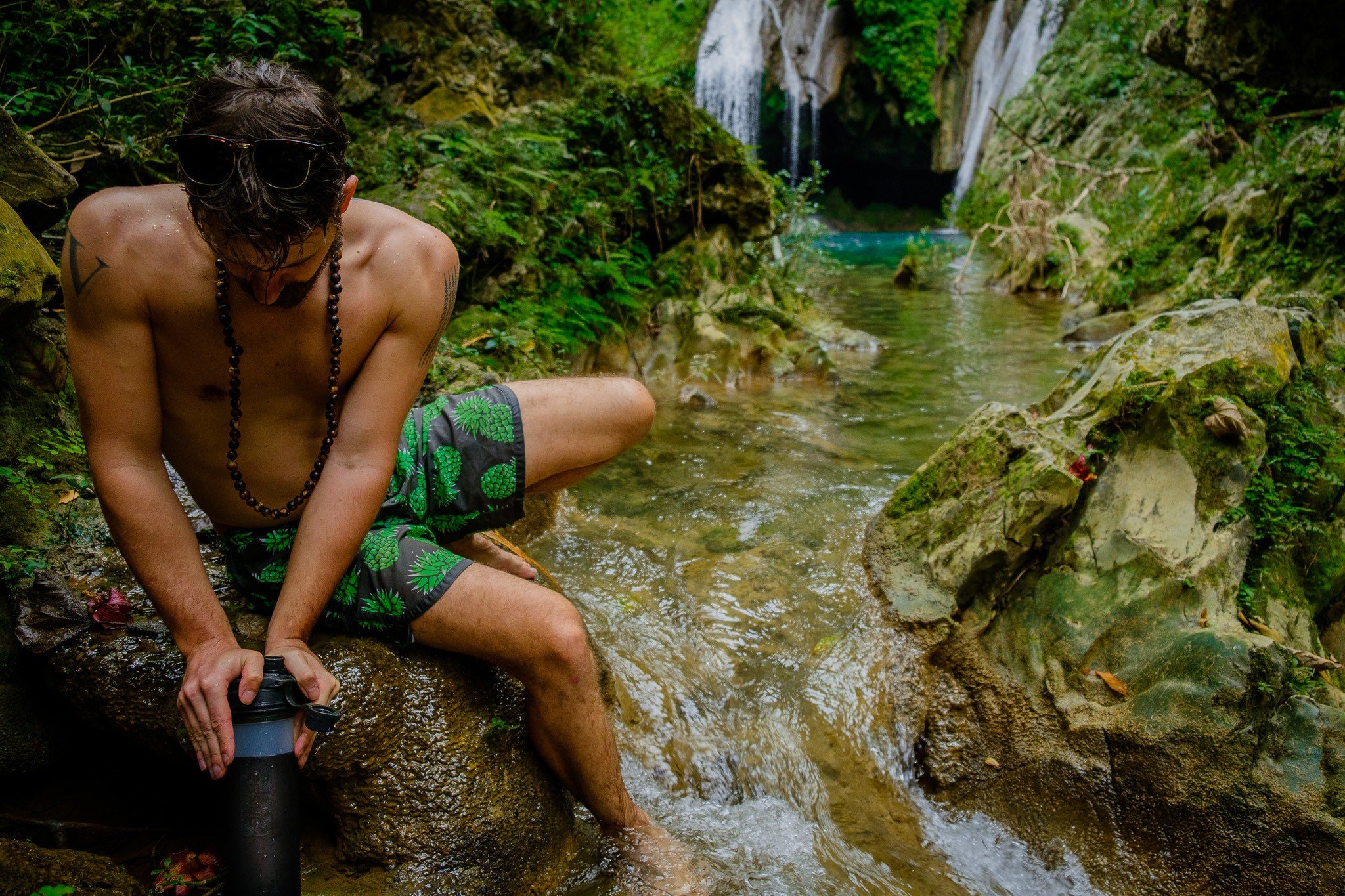
In many parts of the developing world, we westerners can’t drink the tap water. To do so would condemn us to days of sickly torture and hours of sitting on the toilet. So, we need to buy filtered water (in plastic bottles), yes? Wrong!
You do have options! Pack a water filter for every travel adventure. There are so many awesome travel water filters on the market. I have used a Life Straw, which works great (and have never resulted in me getting sick from bad water).
You can actually find a water bottle with a built-in filter as well. I’ve recently started using the Grayl GEOPRESS and fallen in love – you can read our massive review of this epic filter bottle. At the moment, I can’t imagine going back to any other purification system.
It may take a little extra effort to use a water filter, but once you integrate a filter into your daily routine, it becomes quite normal. This is how we become more sustainable travelers. A little bit of effort goes a long way.
4. Don’t Eat Airline Food
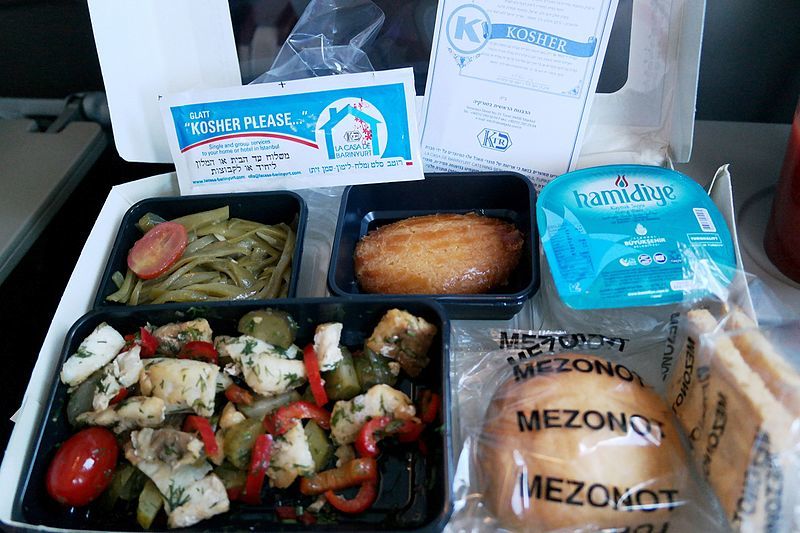
Airlines package their meals in an appalling amount of plastic. Plastic-wrapped food. Plastic-wrapped cutlery. Plastic cups. Plastic straws. Plastic-wrapped everything! To think about the amount of plastic waste generated by airline companies on a daily basis is truly mind-boggling.
These airline practices are unacceptable. So what can you do about it? Everyone has to eat, right? True, so bring your own food! Make sandwiches at home. Pack your own snacks and fruit. Buy food before you go to the airport. Travel with a little food storage box; you will use it more than you think.
Do everything within your power to avoid consuming the plastic-ridden meals provided on flights.
And frankly, airline food is disgusting. Even if it was wrapped in a way that promoted sustainable travel, airline meals are one of the least ideal food choices available.
Not only is packing your own food on a plane great for the planet, but it’s also much better for your health. Let’s try to avoid getting sick before we land, shall we?
5. Carry Your Own Cutlery

You are now starting to see a common theme. Items that you use on a daily basis all have plastic-free alternatives! Carry a pair of travel chopsticks, a spoon, fork… or…wait for it… a camping spork! Maybe you have a stick that you have carved into a scooping feeding shovel—whatever your preferred utensil of choice is, pack it and put it to use.
There is simply no reason why anyone should use plastic cutlery. We have all become complacent in the culture of single-use plastic as a means of convenience.
Sure, plastic forks can be super convenient sometimes. But if you plan ahead and change your habits, packing a pair of chopsticks just becomes normal.
6. Avoid Plastic Containers when Buying Street Food

Street food vendors looooove plastic. Plastic containers are the easiest vessel for them to dish out their delicious food to you, the hungry customer.
In Asia in particular, street food vendors account for a staggering amount of plastic waste backpackers are likely to consume. Don’t get me wrong. I am a street food addict. Eating cheap, tasty street food is one of my favorite parts of traveling. That said, with every bowl of Pad Thai you buy in a plastic container, you are directly part of the problem.
The solution? Travel with your own camping bowl or food box. I have been traveling with some kind of bowl for a few years now. It might sound weird (and street food vendors will look at you as though you’ve lost your mind), but having your own bowl is a great way to combat plastic consumption!
Unable to order street food in Malaysia without plastic-guilt, I bought a bowl for about $2 made from a dried coconut. I still have it today, actually!
There are endless options out there for bowls. Whether it is a light-weight titanium camping bowl or part of an old coconut, each time you break it out you will be contributing to a more sustainable travel world.
7. Don’t Use Single-Use Hotel/Airbnb Shampoo Bottles
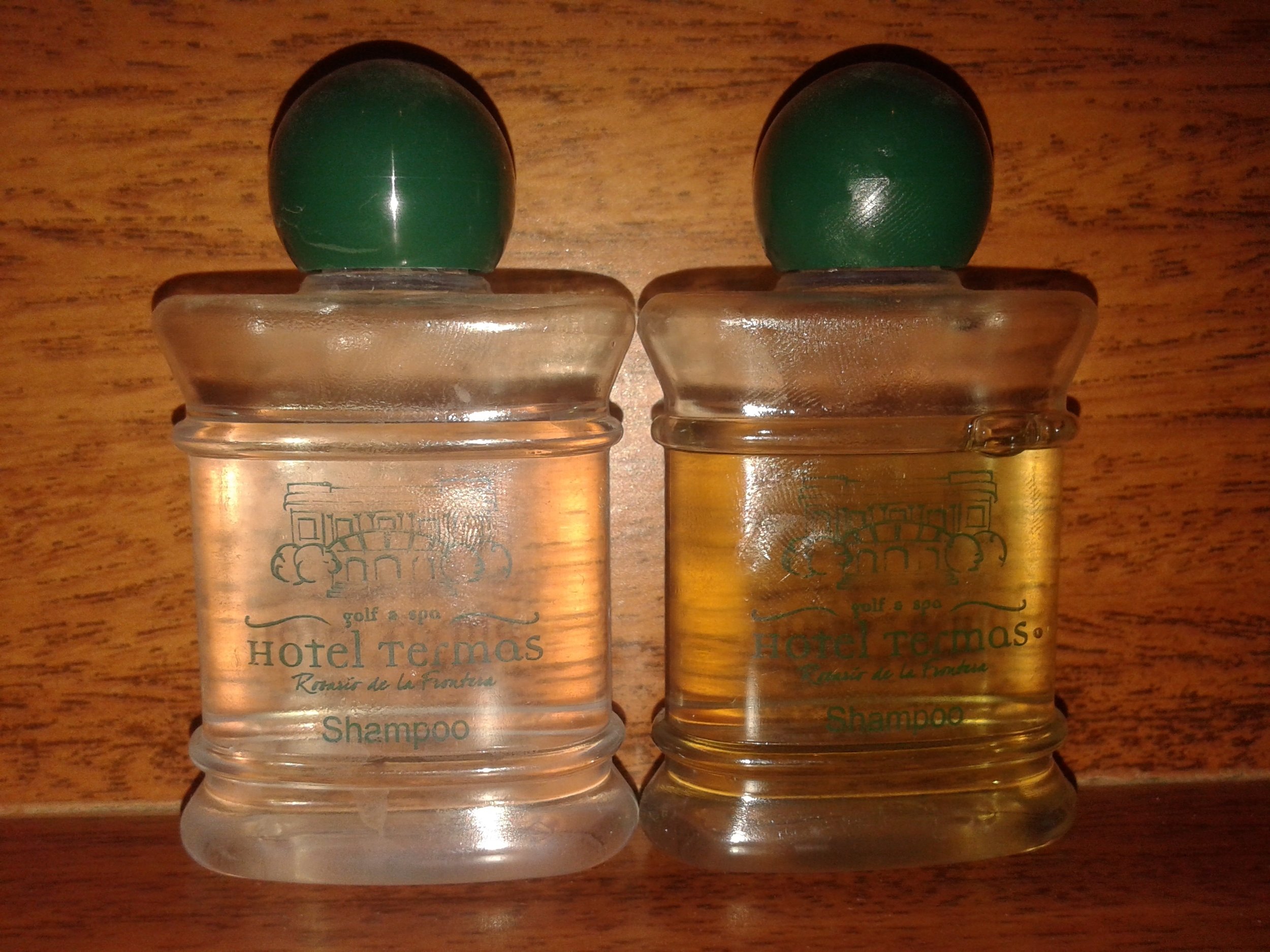
We have all walked into a hotel room bathroom to find an array of shampoo, conditioner, and bath gel waiting for us. Whilst this may seem like a nice gesture on the part of the hotel, single-use shampoo bottles are one of the most common plastic waste items found in the ocean. Just don’t use them… for the amount of product you get in one of these tiny bottles, it simply isn’t worth cracking them open.
Pack your own shampoo/soap/conditioner in reusable leak-proof bottles.
8. Use Bars instead of Bottles
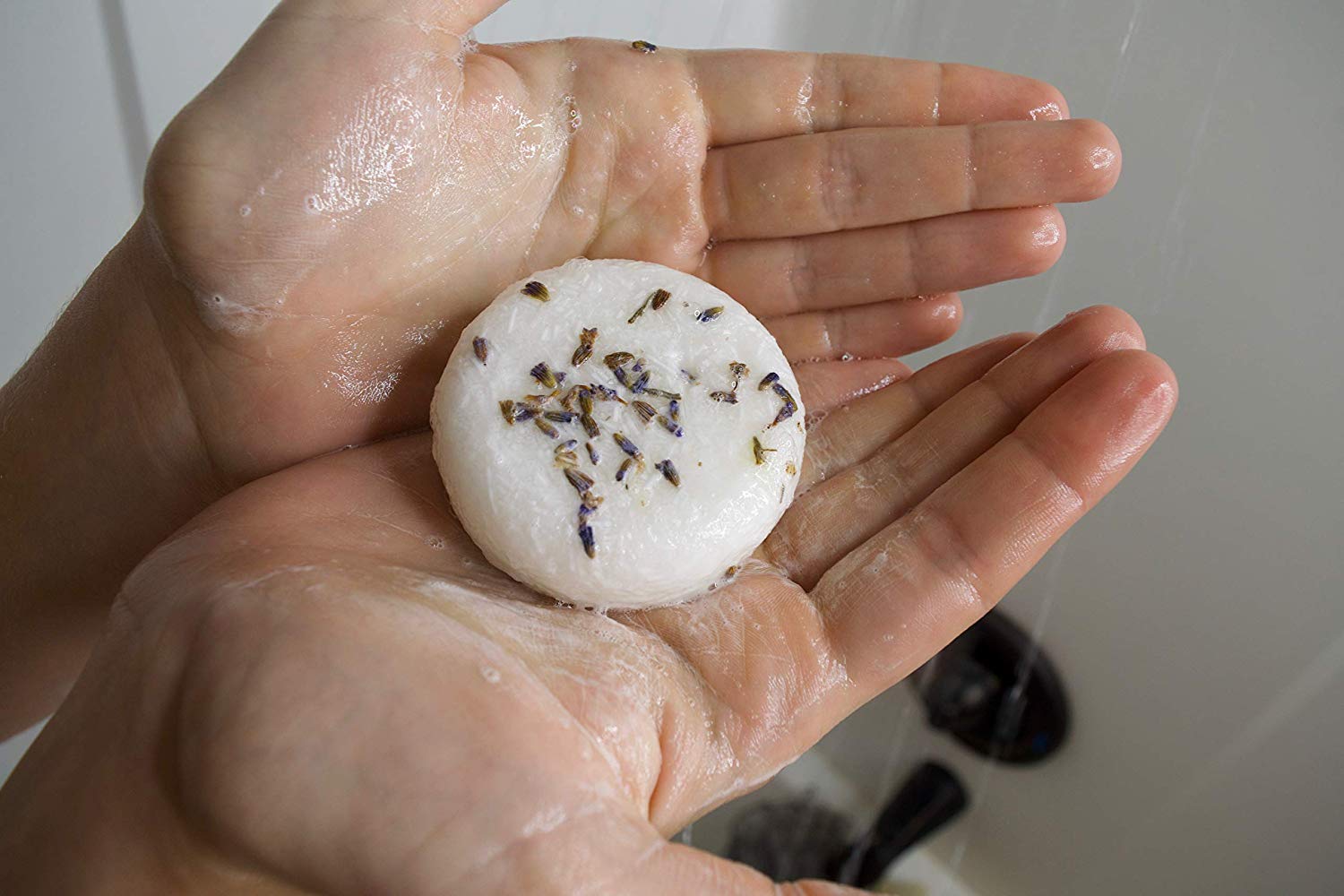
An alternative to liquid soaps and plastic containers, shampoos, and conditioners altogether is to buy them in bar form. That’s right, shampoo in a bar! Plus, shampoo bars will never leak in your bag!
These things work, too. You’re not sacrificing on quality to save the environment. If you buy in local markets or boutique shops, usually these products are produced and sold without ever coming in contact with single-use plastic!
9. Shop at Farmers Markets (Bring your own Bags)

Farmers markets take many forms around the world, but they all have one thing in common: abundant fresh fruit, vegetables, bread, cheese, and a boatload of other delicious products. Often, these markets feature vendors selling stuff free of plastic packaging. Hurray!
Especially as you get more “local,” there are fewer steps between the field and the market stand, meaning you’ll get the freshest stuff with less environmental cost from transportation and bundling the produce up in all that unsustainable packaging.
10. Stop Buying “Travel-Sized” Everything
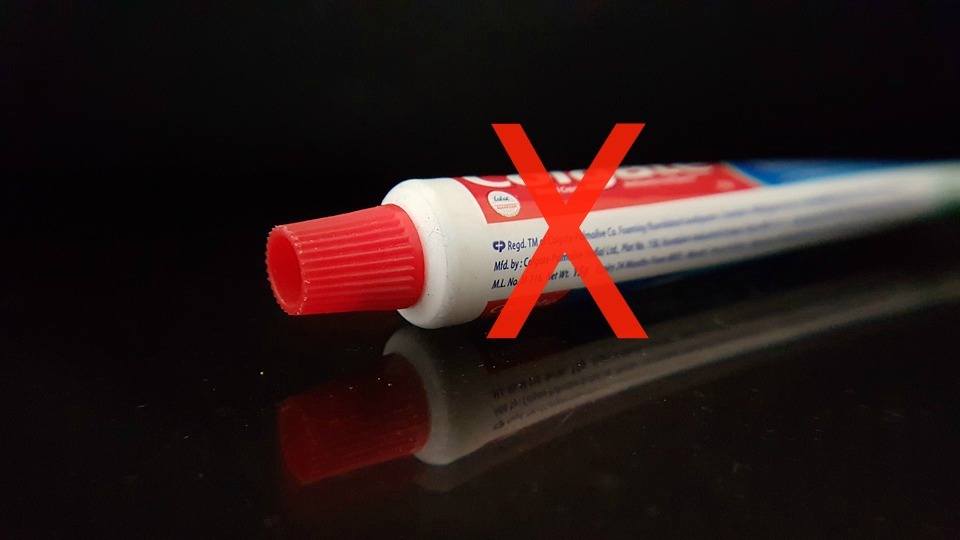
Go big or go home… Whilst I get that airport security regulations significantly limit what sort of toiletries one can bring on a plane, you should still seriously reconsider buying travel size products. A tiny “travel size” tube of toothpaste doesn’t even last a week. That means that after only a handful of tooth brushings, you chuck the tube in the rubbish.
If stopping with the travel size stuff means you just have to buy a tube of toothpaste when you land, so be it. You can buy toothpaste, shampoo, and deodorant everywhere!
I pack a big-ass toiletry bag that carries regular-sized bottles of things. It keeps things from spilling in my checked luggage and it keeps things nicely organized in the bathroom so I don’t have to unpack my things – saving energy and the planet, am I right? You can buy one here.
11. Purchase Beverages in Glass Bottles instead of Plastic
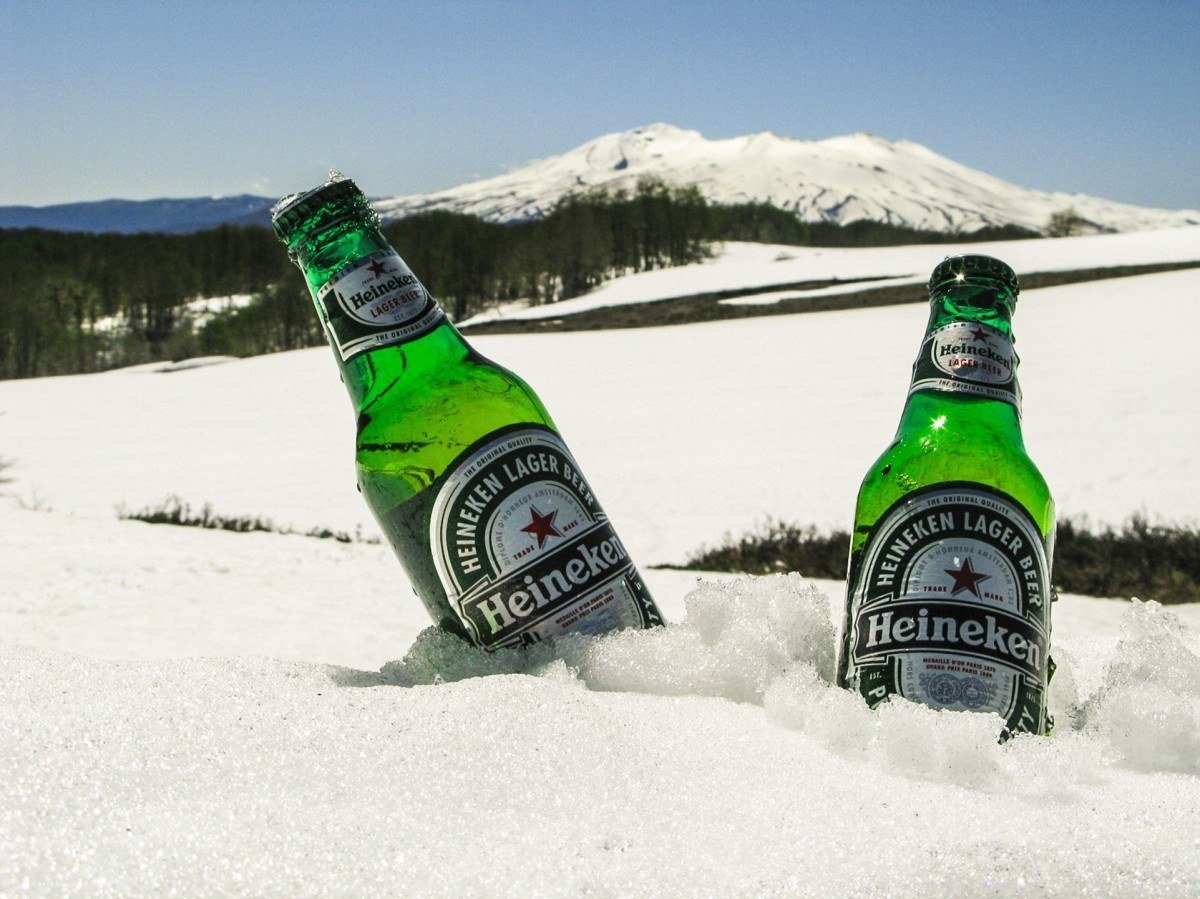
Really have a hankering for a Coke or Iced Tea when traveling? I know the feeling. When possible, avoid buying drinks that come in plastic bottles. This is the same principle as the single-use water bottle problem. More often then not, shops sell cold beverages in glass. If they don’t, think twice about whether or not you really need that soda.
The next best option is aluminum cans, which can also be recycled.
12. Carry your own Head Phone/Ear Buds

Ah, the airlines again…
On long-haul flights, airline companies distribute low-quality, uncomfortable earbuds that people use once and then throw away. In this day and age, most travelers carry their own earbuds and don’t rely on the airlines in order to watch a movie in flight. However, without fail I still see dozens of people take them from the flight attendant on every single long flight I take.
The airline earbuds are doubly problematic because they come plastic wrapped and are themselves plastic. Do yourself a favor and invest in some high-quality badass headphones and never think about using airline earbuds again.
13. Say No to Plastic Straws

This one is easy. You don’t actually have to do anything other than say, “no straw please,” at the end of your drink order.
Whether you are drinking your favourite cocktail or simply sippin’ on a cup of juice, stop using straws! Unless you are incapable of fluid intake without a straw (even then, they make metal and bamboo straws), there is simply no need to ever need a straw!
Plastic straws are so entrenched in the DNA of servers, bartenders, baristas, and the corner orange juice guy, that you have to be quick in your communication. Your words must be faster than the quickest straw-to-drink movement.
If you are traveling in a country where English is not readily understood, learn how to say “no straw please” in the local language.
14. Use Bio-Degradable Wet Wipes
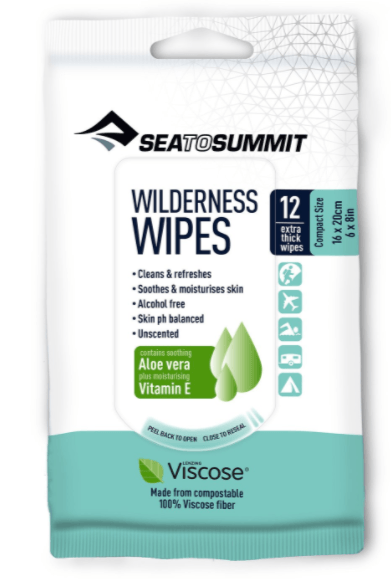
I never thought I would see the words “wet wipes” in one of my articles. But hey, let’s be honest, all of us use (or need to use) wet wipes from time to time when showers are few and far between.
Conventional wet wipes are anything but eco. To quote one study, “the wipes wash up on beaches all around the world. A 2014 estimate from the MCS (Marine Conservation Society, UK) says there are approximately 35 wipes per kilometer of beach in Britain – a 50% increase from 2013.”
That’s a lot of fucking wet wipes.
I have good news for you (and your bum) though. Biodegradable wet wipes exist and you should know about them. Biodegradable wet wipes are exactly the same as their polluting cousins, except for the crucial fact that they are typically made from a natural fiber, and this breaks down quite quickly.
I am proud to report they work quite well when a real shower isn’t possible. Sea to Summit Wilderness Wipes are good value, especially if you are traveling to rural places or camping a lot.
15. Use a Menstrual Cup

Hey ladies, Clair here! Getting a period while traveling can be absolutely a nightmare or no trouble at all depending on how prepared you are. Good for the environment and small enough for even the lightest of travelers, menstrual cups save you a lot of worries and a lot of single-use items.
Menstrual cups clean easily, so they’re really the only thing you need to carry with you to take care of your periods on the road. But it doesn’t stop there: sustainable period products are more abundant than ever. So if menstrual cups don’t work for you, you have plenty more options to check out.
16. Buy a Bamboo/Compostable Tooth Brush

Cutting down on your plastic footprint whilst traveling is the cumulative effort of a series of small life changes. We have probably been using plastic toothbrushes since the moment our first teeth to root inside our mouths. After a month or two (or ten??!) the spent toothbrush winds up in the rubbish and—as history has shown us—most likely into the ocean.
Picking up a bamboo toothbrush is a viable option. Opting for a toothbrush with changeable heads is another great way to reduce buying the whole plastic brush each time you wear out the old one.
17. Get a reusable Ear Swab

Oh, and you should also get yourself a reusable swab for your ears from LastSwab. They are pretty cheap to buy, come in a nice and biodegradable little box, are very easy to clean and will last for years.
18. Stop Using Face Wash with Micro Plastic Scrubbing Beads
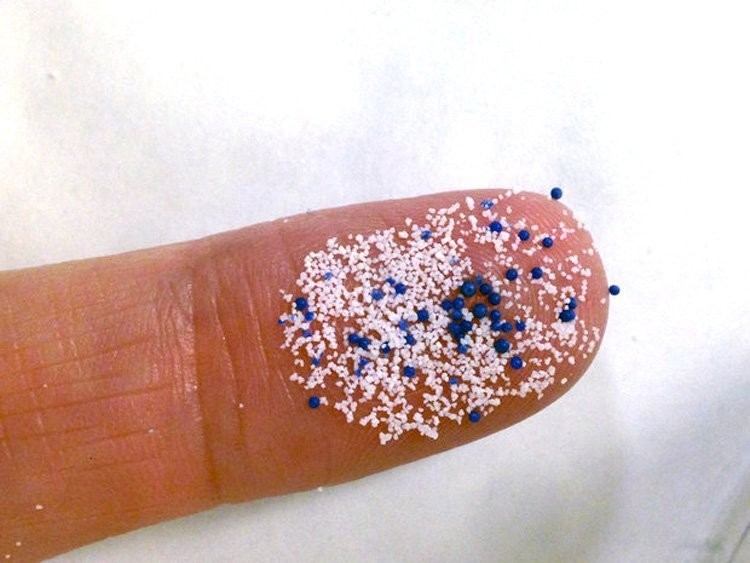
Photo: Ecowatch.
Have you ever used a face wash with those little tiny scrubbers like grains of sand embedded in the cream? Most likely, those are plastic microbeads. Plastic microbeads are toxic little bits of plastic that end up in our water supply, oceans, and in the bodies of animals and humans.
Many countries, including the UK, have banned the use of plastic microbeads in cosmetics altogether.
If you are using microbead infested products, I urge you to please stop! Don’t worry, you can still scrub your face! There are many natural alternatives (which our ancestors used for thousands of years) to microbeads, including apricot stones, clay, sand, and even coffee grounds. Better still, make your own!
19. Pick Up Plastic Bits and Rubbish when Hiking
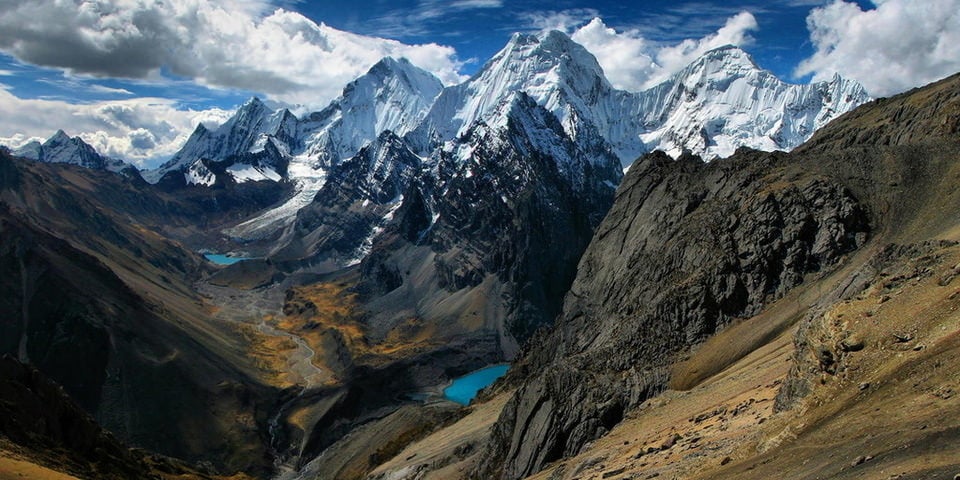
If every person picked up the little bits of stray plastic— bottle caps, granola bar wrappers, chewing gum foil, etc— while out on a hike, the trails of the world would be much cleaner. Most daypacks have side pockets. It doesn’t take much effort to stoop down and pick up a piece of rubbish that you come across on any given trail. Fill up those pockets!
Not only will you make the trail more beautiful, but you will prevent animals from ingesting the plastic. Boom! Win!
In theory, backcountry spaces should not need people to pick up after other people. But that just isn’t the world we live in. Plus, people are less likely to litter or be careless with their little bits of plastic trash if they don’t see other bits of trash present.
20. If you Book a Tour, Book an Eco Tour

The term “eco-tour” is about a generic a term as the phrase “white bread.” That said, some tour companies really do make an effort to cut back on plastic waste, practice Leave No Trace principles, and make overall positive impacts on the communities and natural environments they visit.
Other companies might claim to be “eco,” but in reality, they are about as eco as 100 dudes with chainsaws in the Brazilan Rainforest.
My point is this: if you book a tour, do your homework. Make sure the company has a positive environmental reputation. Ask questions! Read reviews! Spend some time checking up on the company.
If you come across information that suggests that a company is anything but eco, I recommend that you expand your search.
21. Invest in Quality Backpacking Gear

A great way to reduce your plastic footprint and limit your overall rubbish output is to buy quality, sustainable backpacking gear that lasts. Many top outdoor gear companies like Osprey, MSR, Patagonia, REI, etc will repair your gear for free…for years.
A quality backpack can easily last you a decade. By contrast, a poorly constructed backpack, jacket, water bottle—whatever the product—won’t last a year. Save money long term, reduce waste, reduce plastic. It’s a win-win.
Just last week I needed a replacement buckle for a chest strap on my Osprey Backpack and the company sent me a replacement part within five days time. Amazing! Just replacing a part is way cheaper obviously (it was free) than buying a whole new backpack. Even better, the backpack doesn’t end up in the rubbish pile after only a few years of use.
Final Thoughts on Reducing Your Plastic Footprint While Traveling
As you have seen, reducing your plastic footprint isn’t that complicated. In most cases, consuming plastic revolves around daily routines. We, humans, are creatures of habit, and with new habits come new routines.
When those routines involve less single-use plastic, the reward is a healthier planet that has a better chance of being a good place for us to raise our families…
Sometimes avoiding plastic is easy; other times it can be quite difficult and frustrating since plastic is literally everywhere! We have the ability to change our relationship with plastic. As travelers, we do not need to use plastic, and even when we think we don’t have options, we inevitably do.
If you are thinking about reducing your plastic footprint and traveling sustainably, you are already headed in the right direction. Now, it’s time to put some of these plastic-reducing tips into action as you develop your own plastic-reducing routine.
And don’t stop there. There are plenty of other travel practices to put into place. For more tips, check out our article on responsible travel.
Also, check out Slo Active’s amazing article – chalked full of stats and facts – about plastic pollution and how we can reduce it.
The health of our natural world is at stake. As backpackers set out in search of adventure, it is our duty to show the world some respect and stay the hell away from plastic products as much as we can (or entirely!).
If you have any plastic-reducing tips that I missed on this list, please share your knowledge in the comments below! Cheers Guys!

Buy Us a Coffee!
A couple of you lovely readers suggested we set up a tip jar for direct support as an alternative to booking through our links, since we’ve decided to keep the site ad-free. So here it is!
You can now buy The Broke Backpacker a coffee. If you like and use our content to plan your trips, it’s a much appreciated way to show appreciation 🙂



